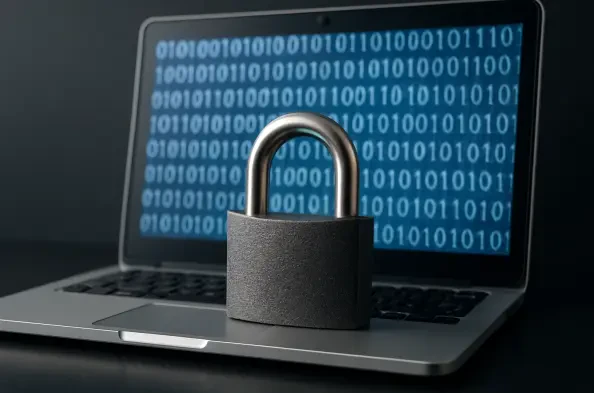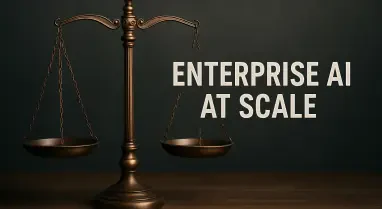Imagine a world where the digital locks protecting sensitive information—banking transactions, government secrets, and personal data—are suddenly rendered useless by an unstoppable computational force. Quantum computing, with its potential to solve complex problems at speeds unimaginable to traditional systems, poses exactly this threat to current encryption methods, making preparation urgent. As the horizon of ‘Q-Day’ approaches, the moment when quantum computers can break widely used cryptographic algorithms, the urgency to prepare intensifies. Post-Quantum Cryptography (PQC) emerges as the frontline defense, offering hope to secure data against these looming dangers. This exploration delves into the nature of the quantum threat, the hidden risks already at play, and the global strategies shaping PQC readiness. By understanding the challenges and the collaborative efforts underway, a clearer path emerges to safeguard the digital landscape from an inevitable technological shift.
Decoding the Quantum Computing Threat
The advent of quantum computing marks a paradigm shift in computational power, leveraging principles like superposition and entanglement to process information in ways classical computers cannot. Unlike traditional systems that rely on bits as either 0 or 1, quantum systems use qubits, enabling exponential problem-solving capabilities. This directly jeopardizes encryption standards such as the Advanced Encryption Standard (AES) for symmetric protection and Rivest-Shamir-Adleman (RSA) for asymmetric security. These methods depend on the sheer difficulty of solving mathematical problems, a barrier quantum algorithms like Shor’s can obliterate for asymmetric encryption. Similarly, Grover’s algorithm offers a quadratic speedup, significantly weakening symmetric defenses. With Q-Day projected to arrive within the next 5 to 10 years, the window to bolster cybersecurity is narrowing, demanding immediate attention to prevent catastrophic breaches across critical sectors.
Beyond the theoretical, the quantum threat is grounded in its potential to disrupt real-world systems that underpin modern society. Financial networks, healthcare databases, and national defense communications all rely on encryption that could be dismantled by quantum advancements. Shor’s algorithm, for instance, can factor large numbers—a cornerstone of RSA—at an alarming rate, rendering public-key cryptography obsolete. Meanwhile, Grover’s impact on symmetric systems like AES means that even brute-force attack times could be halved in effectiveness, exposing vulnerabilities in data protection. The ambiguity surrounding Q-Day’s exact timeline adds pressure, as no formal alert will signal its arrival. This uncertainty compels industries to act preemptively, recognizing that the consequences of inaction could unravel the trust and security embedded in digital interactions long before quantum machines are widely accessible.
Unmasking the Risk of Preemptive Data Harvesting
A lesser-known but equally alarming danger lies in strategies dubbed “harvest now, decrypt later,” where malicious actors are already amassing encrypted data with the intent to crack it once quantum tools become viable. This tactic targets everything from online banking transactions to critical infrastructure communications, banking on the future availability of quantum power to unlock stolen information. The retroactive nature of this threat means that data transmitted today—potentially holding trade secrets or personal identities—could be exposed years down the line. This silent accumulation of sensitive material underscores why preparation cannot wait for Q-Day’s confirmation. Governments and corporations alike must prioritize safeguarding current transmissions as if the quantum breakthrough is imminent, ensuring that even archived data remains secure against tomorrow’s computational might.
The implications of such preemptive attacks extend far beyond individual privacy, touching on systemic stability across global networks. Consider the vast troves of encrypted information exchanged daily—military strategies, corporate intellectual property, and citizen records—all vulnerable to being stockpiled by adversaries. Once quantum decryption becomes feasible, the fallout could destabilize economies and compromise national security on an unprecedented scale. Historical data breaches have already shown how leaked information can cause lasting damage; amplifying this with quantum capabilities heightens the stakes. Addressing this requires not just future-proofing new systems but also reevaluating how existing data is protected and stored. The urgency to transition to quantum-resistant methods is thus not a distant concern but a present necessity to thwart the invisible threat of data harvesting already in motion.
Charting the Course with Global PQC Standards
In response to mounting quantum risks, a concerted global effort is shaping the future of cybersecurity through the development of Post-Quantum Cryptography standards. Leading this charge is the National Institute of Standards and Technology (NIST) in the United States, which finalized three pivotal PQC algorithms in 2024: CRYSTALS-Kyber, CRYSTALS-Dilithium, and SPHINCS+. These are engineered to withstand quantum attacks, with an additional key encapsulation mechanism planned for release soon. NIST’s roadmap targets phasing out vulnerable asymmetric algorithms by 2030 and achieving full migration to PQC by 2035. Echoing this timeline, the UK’s National Cyber Security Centre (NCSC) mandates that large organizations outline transition plans by 2028 and complete high-priority actions by 2031, aligning with the broader 2035 readiness goal. This structured approach signals a unified commitment to fortifying digital defenses.
The significance of these standardized algorithms lies in their role as the bedrock for a secure post-quantum world, ensuring interoperability and consistency across diverse systems. The NIST-selected standards underwent rigorous evaluation to balance security with performance, addressing the complex needs of industries ranging from finance to telecommunications. Beyond algorithm development, the established timelines provide clear benchmarks for compliance, pushing organizations to integrate PQC solutions systematically. The alignment between NIST and NCSC frameworks reflects a rare international consensus on the gravity of the quantum threat, fostering trust in the adoption process. As these standards gain traction, they pave the way for manufacturers and service providers to embed quantum-resistant cryptography into products and protocols, mitigating risks before they fully materialize on a global stage.
Leveraging Standards for Cryptographic Resilience
Standards organizations such as the Trusted Computing Group (TCG) and the FIDO Alliance are instrumental in translating PQC algorithms into practical, deployable solutions for devices and systems. Their ongoing work involves updating specifications to incorporate NIST’s quantum-resistant standards, ensuring that hardware and software remain protected as threats evolve. A critical component of this effort is cryptographic agility, a principle embedded in standards like TPM 2.0 for well over a decade. This feature enables seamless updates to encryption algorithms without requiring complete system overhauls, a functionality now integral to platforms like Windows 11. Such adaptability ensures that technology can pivot swiftly in response to emerging quantum capabilities, maintaining security across a wide array of applications and infrastructures.
The emphasis on cryptographic agility highlights a forward-thinking approach to cybersecurity, where flexibility is as vital as strength. By embedding this capability into foundational standards, organizations like TCG provide a framework for continuous improvement, allowing systems to integrate new PQC algorithms as they are finalized. This is particularly crucial for industries reliant on long-term data protection, such as government and healthcare, where legacy systems often persist for decades. The practical implementation of these standards also involves rigorous testing to ensure compatibility and performance, preventing disruptions during transitions. As quantum threats loom closer, the role of these bodies in fostering resilience cannot be understated, offering a blueprint for manufacturers and developers to build products that stand firm against future computational challenges.
Forging a United Front Against Quantum Risks
Tackling the quantum threat transcends the efforts of any single entity, necessitating a collaborative ecosystem that spans governments, industries, and standards bodies. The journey to PQC readiness involves a vast network dedicated to researching, testing, and deploying secure solutions well before quantum computers become a tangible risk. From NIST’s pioneering standards to national transition roadmaps and corporate adoption strategies, this collective endeavor ensures that digital infrastructure is fortified against potential breaches. Partnerships across borders facilitate the sharing of best practices and resources, amplifying the impact of individual initiatives. This spirit of unity is essential to navigate the uncertainties of Q-Day, creating a robust defense that protects not just isolated systems but the interconnected fabric of global technology.
The collaborative model also extends to engaging diverse stakeholders, ensuring that small enterprises and large corporations alike are equipped to face quantum challenges. Industry forums and alliances play a key role in disseminating knowledge about PQC implementation, breaking down complex technical requirements into actionable steps. Governments contribute by enforcing policies that mandate readiness within specified timelines, while academic institutions drive innovation through research into next-generation cryptography. This multi-faceted approach mitigates the risk of fragmented responses, aligning efforts toward a common goal of security by 2035. Reflecting on past global tech transitions, such as the shift to IPv6, the success of this united front in addressing quantum threats becomes a testament to the power of shared vision, setting a precedent for future cybersecurity challenges.






